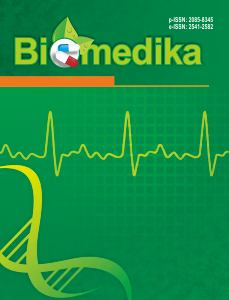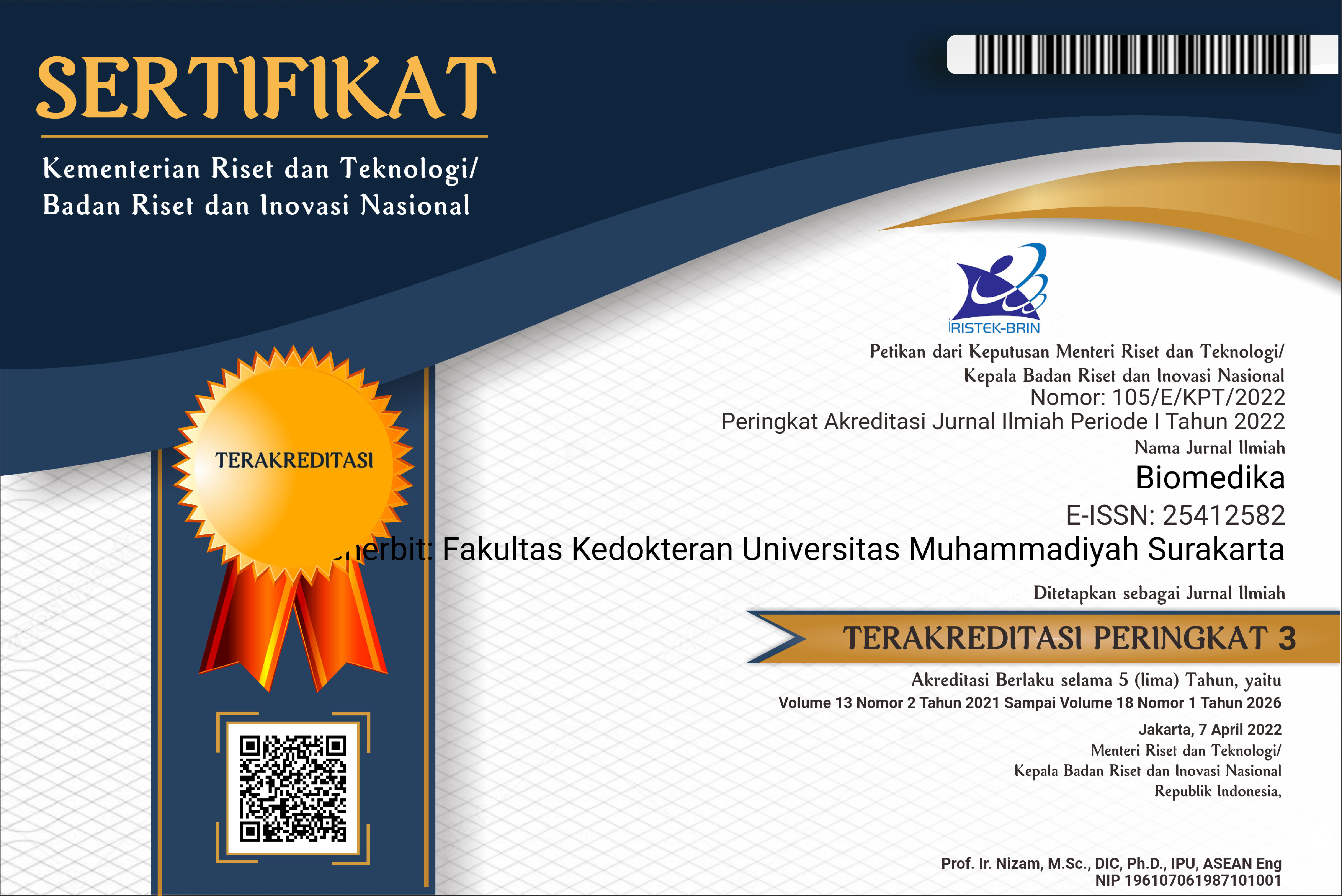EVALUATION OF HEMOGLOBIN LEVELS, ERYTHROCYTE INDEX, AND MENTZER INDEX FOR EARLY DETECTION OF ANEMIA AND THALASSEMIA MINOR IN JUNIOR HIGH SCHOOL
DOI:
https://doi.org/10.23917/biomedika.v17i2.10566Keywords:
Thalassemia Trait, Iron Deficiency Anemia, Mentzer Index, School ScreeningAbstract
Introduction: Thalassemia and iron deficiency anemia (IDA) are two of the most common causes of microcytic anemia worldwide, particularly in developing countries. This study was conducted to analyze hematological parameters and apply the Mentzer Index among junior high school students in Pontianak, Indonesia, in order to identify suspected cases of thalassemia trait and IDA, and to assess the feasibility of using Mentzer Index as a preliminary screening tool in this setting.
Methods: A cross-sectional study was conducted involving 50 students (aged 13-17 years) who underwent complete blood count (CBC) testing. Parameters included hemoglobin (Hb), erythrocyte count, MCV, MCH, MCHC, RDW and Mentzer Index. An MI <13 was interpreted as suggestive of thalassemia trait, while MI ≥ 13 indicated possible IDA or normal findings
Results: Among the participants, 6 students (11,5%) had MI < 13, consistent with suspected thalassemia minor. Several others showed anemia with MI ≥ 13 and elevated RDW, suggestive of IDA. Girls were more frequently affected by anemia-related abnormalities. Overall, microcytosis (MCV < 80 fL), hypochromia (MCH <27 pg) and high RDW were commonly observed
Conclusion: A notable proportion of students screened exhibited hematological indicators of thalassemia trait and IDA. The Mentzer Index, combined with CBC parameters, proved effective in initial differentiation. Early school-based screening is essential for timely diagnosis, management, and genetic counseling in at-risk populations.
Downloads
Downloads
Submitted
Accepted
Published
Issue
Section
License
Copyright (c) 2025 Biomedika

This work is licensed under a Creative Commons Attribution 4.0 International License.












